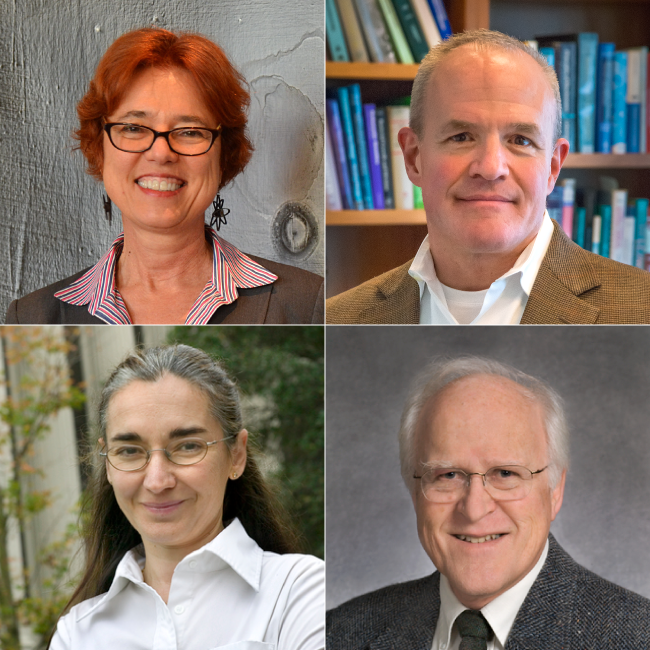Four U.S. Department of Energy’s Lawrence Berkeley National Laboratory (Berkeley Lab) scientists have been elected to the 2016 class of the American Academy of Arts and Sciences, a 236-year-old honorary society that recognizes accomplished scholars, scientists and artists in academia, the humanities, arts, business and government.

Barbara Jacak, Jay Keasling, Robert Glaeser and Eva Nogales (clockwise from top left) have been elected to the American Academy of Arts and Sciences. (Berkeley Lab photo)
Biochemist Robert Glaeser, physicist Barbara Jacak, synthetic biologist Jay Keasling and molecular biologist Eva Nogales are among 213 new members announced by the academy today (Wednesday, April 20). All four also hold joint appointments as UC Berkeley faculty.
Robert Glaeser is a Berkeley Lab senior scientist in the Molecular Biophysics and Integrative Biology division and a leading authority on electron crystallography. He is also a UC Berkeley professor emeritus of molecular and cell biology.
Barbara Jacak, a leader in the nuclear physics community, is the director of Berkeley Lab’s Nuclear Science division. She is also a UC Berkeley professor of physics whose research focuses on the experimental study of quark gluon plasma.
Jay Keasling, a pioneer in synthetic biology, is Berkeley Lab’s associate lab director of biosciences and CEO of the Joint BioEnergy Institute. He is also a UC Berkeley professor of chemical and biomolecular engineering and of bioengineering.
Eva Nogales is a Berkeley Lab faculty senior scientist in the Molecular Biophysics and Integrative Biology division who has made groundbreaking discoveries using cryo-electron microscopy. She is also a UC Berkeley professor of molecular and cell biology and an investigator in the Howard Hughes Medical Institute.
With these new members, Berkeley Lab now has 34 scientists in the American Academy of Arts and Sciences.
“In a tradition reaching back to the earliest days of our nation, the honor of election to the American Academy is also a call to service,” said Academy President Jonathan F. Fanton in a press statement. “Through our projects, publications, and events, the Academy provides members with opportunities to make common cause with one another. We invite these newly elected members to participate in this important and rewarding work—and to help produce the useful knowledge for which the Academy’s 1780 charter calls.”
Founded in 1780, the American Academy of Arts and Sciences is one of the country’s oldest learned societies and independent policy research centers, convening leaders from the academic, business, and government sectors to respond to the challenges facing—and opportunities available to—the nation and the world. Members contribute to academy publications and studies of science, engineering, and technology policy; global security and international affairs; the humanities, arts, and education; and American institutions and the public good.
The new academy members will be inducted at an October 8 ceremony in Cambridge, Mass.
###
Lawrence Berkeley National Laboratory addresses the world’s most urgent scientific challenges by advancing sustainable energy, protecting human health, creating new materials, and revealing the origin and fate of the universe. Founded in 1931, Berkeley Lab’s scientific expertise has been recognized with 13 Nobel prizes. The University of California manages Berkeley Lab for the U.S. Department of Energy’s Office of Science. For more, visit www.lbl.gov.
DOE’s Office of Science is the single largest supporter of basic research in the physical sciences in the United States, and is working to address some of the most pressing challenges of our time. For more information, please visit science.energy.gov.
